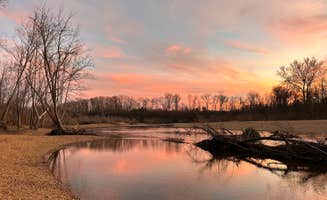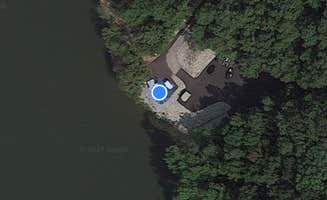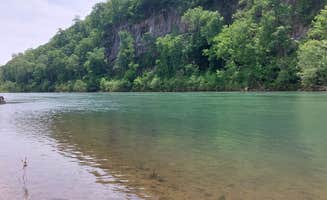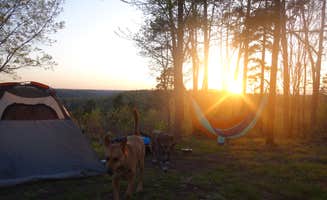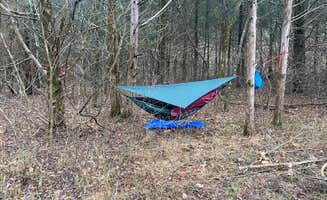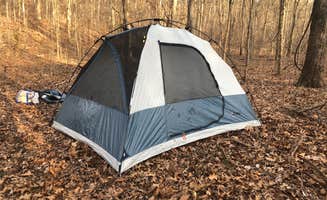Dispersed camping near Piedmont, Missouri offers primitive sites throughout Mark Twain National Forest and along the Current River in the Ozark National Scenic Riverways. Most locations sit at elevations between 500-1000 feet with thick deciduous forest coverage. Summer temperatures often exceed 90°F with high humidity, while winter nights regularly drop below freezing with occasional snowfall between December and February.
What to do
Fishing the Current River: The Current River provides excellent fishing opportunities at Log Yard Campground. "This area has access to the shores of the current river. No campsites, just the open rocky shores. You can park right on the shores and set up camp," notes Dave N. Clear waters make it ideal for trout fishing, especially during spring and fall.
Wildlife watching: Early mornings offer the best chances to spot wildlife. "If you're lucky, you may see the local elk herd. They reintroduced elk in this area a few years ago," shares Joseph A. about camping at Log Yard. Bird watchers should bring binoculars for owls, wild turkeys, and migratory birds.
Stargazing: Low light pollution makes this region perfect for astronomy enthusiasts. At Murphy Overlook, "there was no light pollution so seeing the stars and getting some night photos is possible," according to Brian. The best viewing occurs during clear nights between late fall and early spring when humidity is lower.
What campers like
Riverside camping spots: Campers appreciate direct water access. At Whitten River Access, "There are several level, clear places to camp with enough room for RVs. It's free and first come camping," explains Ralph S. Most riverside sites fill quickly during summer weekends.
Solitude and remoteness: Many sites offer true seclusion from crowds. "We were the only people along this forest service road and got the prettiest spot towards the end of the road overlooking the mountain across. This camping area is a hidden gem!" shares Shea B. about Murphy Overlook. Weekday visits during spring and fall typically offer the most solitude.
Clear water access: The rivers in this region are known for their clarity. At Big River Primitive Campground, Jeremy G. notes, "Clean crisp water from the river at its origin. Quiet and perfect." Many campers filter this water for drinking due to its high quality.
What you should know
Road conditions: Many dispersed sites require appropriate vehicles. At Beaver Lake Recreation Area, Richard F. warns, "I think they're only five or six decent spots total." Access often requires navigating unpaved roads that deteriorate after rainfall.
Limited cell coverage: Prepare for minimal connectivity. Brian notes at Murphy Overlook, "AT&T service was spotty - basically nonexistent. So if you're looking for a place to escape and unwind, this is a great location."
Wildlife precautions: Black bears are present in the region. Sean A. reports, "Saw an adult black bear when we left, only about 0.5 a mile from camp. Ran across the road in front of us." Store food properly in sealed containers and maintain clean campsites.
Seasonal flooding: Water levels change rapidly after rain. Many low-lying areas become inaccessible during wet periods, particularly in spring. Always check weather forecasts and have backup camping options.
Tips for camping with families
Choose sites with amenities: For families, Sulphur Springs Dispersed offers more convenience. Frank G. notes, "About 20 parking spaces, a vault toilet, and a boat launch. Open for solar panels, but tree cover around the lot." The vault toilets make this location more suitable for younger children.
Bring insect protection: Ticks are abundant in warmer months. Richard F. at Beaver Lake Recreation Area mentions locals warned of "a lot of ticks in the forest." Long sleeves, pants, and regular tick checks are essential when camping with children between April and October.
Plan for temperature swings: Summer days often reach 90°F but nights can drop 30 degrees. Pack layers appropriate for significant daily temperature changes, especially during spring and fall.
Prepare for limited facilities: Most sites lack drinking water. Bring 1-2 gallons per person per day, plus water filtration options for longer stays. No trash service means packing out all waste.
Tips from RVers
Level parking challenges: Finding level spots for larger vehicles can be difficult. At McCormack Lake Rec Area, some spots accommodate RVs but remain primitive. Ralph S. notes about Whitten River Access: "The road in is rough gravel and a big RV will be slow going. However, I've seen good size RVs there."
Road clearance requirements: Many forest service roads have rough sections. For Murphy Overlook, Jason F. advises, "This site is accessible by AWD and 4x4 but I would hesitate to attempt it with any other car."
Generator etiquette: If using generators, respect quiet hours. Vikki B. at Log Yard Campground observed, "The campers who came in late on our last night destroyed the peaceful ambiance; loud kids running all over and pulling branches down from living trees, loud music past quiet hours and most running generators."
Weather preparedness: Flash flooding can block exit routes. As Joseph A. warns about Log Yard, "If the weather moves in, it would be wise to pack up and move out while you can. If the creek comes up, you may not be able to cross it again."


